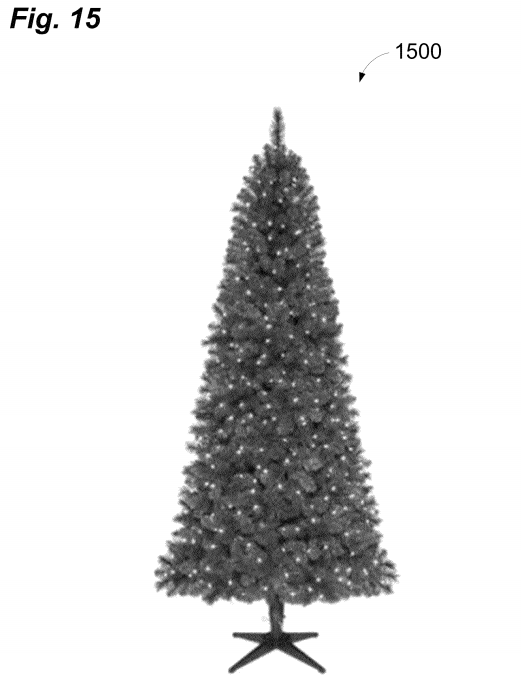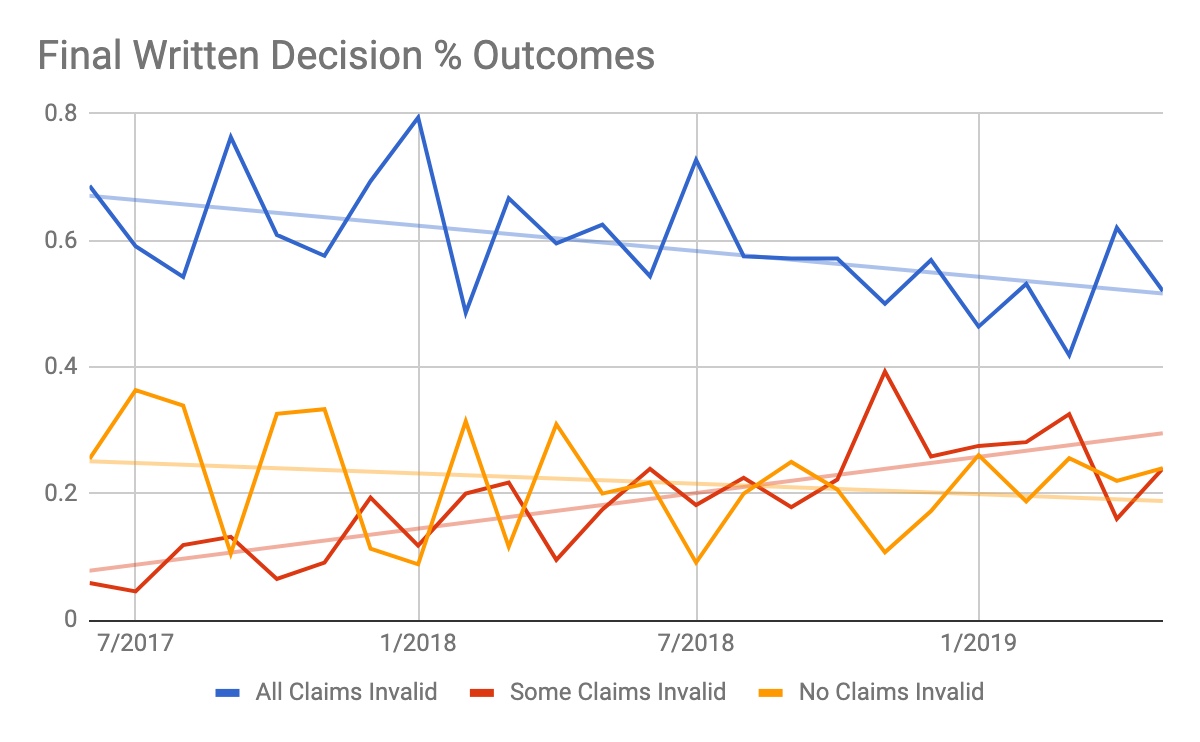
It’s the week of the Fourth of July and that means that it’s time to talk about Christmas trees. Or at least about patents for creating an electric connection between different sections of artificial trees.
In a pairPatent Application Information Retrieval System. The USPTO's electronic system for storing and accessing information regarding a patent. There is a public version for searching file wrappers. of decisions yesterday [1][2], both dealing with a dispute between two companies over artificial Christmas trees, the Federal CircuitSee CAFC reversed the Patent Trial and Appeal Board’s determinations. In each case, the Federal CircuitSee CAFC found that the PTABPatent Trial and Appeal Board. Reviews adverse decisions of examiners on written appeals of applicants and appeals of reexaminations, and conducts inter partes reviews and post-grant reviews. The Board also continues to decide patent interferences, as it was known as the Board of Patent Appeals and Interferences (BPAI) before the AIA. had applied an overly demanding standard in reaching a decision that the claims were not obvious.
In one case, the PTABPatent Trial and Appeal Board. Reviews adverse decisions of examiners on written appeals of applicants and appeals of reexaminations, and conducts inter partes reviews and post-grant reviews. The Board also continues to decide patent interferences, as it was known as the Board of Patent Appeals and Interferences (BPAI) before the AIA. decided that an ordinary engineer wouldn’t have considered substituting a press-fit connector in place of a snap-fit connector. This led the PTABPatent Trial and Appeal Board. Reviews adverse decisions of examiners on written appeals of applicants and appeals of reexaminations, and conducts inter partes reviews and post-grant reviews. The Board also continues to decide patent interferences, as it was known as the Board of Patent Appeals and Interferences (BPAI) before the AIA. to find the claims valid. The Federal CircuitSee CAFC disagreed, finding that it would have been obvious to make that substitution, and sent it back to the PTABPatent Trial and Appeal Board. Reviews adverse decisions of examiners on written appeals of applicants and appeals of reexaminations, and conducts inter partes reviews and post-grant reviews. The Board also continues to decide patent interferences, as it was known as the Board of Patent Appeals and Interferences (BPAI) before the AIA. for further consideration in light of that determination.
In the other case, the PTABPatent Trial and Appeal Board. Reviews adverse decisions of examiners on written appeals of applicants and appeals of reexaminations, and conducts inter partes reviews and post-grant reviews. The Board also continues to decide patent interferences, as it was known as the Board of Patent Appeals and Interferences (BPAI) before the AIA. only considered a portion of the evidence presented by the petitioner. The Federal CircuitSee CAFC rejected the PTAB’s decision not to consider the entirety of the evidence and again returned the case to the PTABPatent Trial and Appeal Board. Reviews adverse decisions of examiners on written appeals of applicants and appeals of reexaminations, and conducts inter partes reviews and post-grant reviews. The Board also continues to decide patent interferences, as it was known as the Board of Patent Appeals and Interferences (BPAI) before the AIA. for further consideration.
Seeing the Forest
In both cases, the PTABPatent Trial and Appeal Board. Reviews adverse decisions of examiners on written appeals of applicants and appeals of reexaminations, and conducts inter partes reviews and post-grant reviews. The Board also continues to decide patent interferences, as it was known as the Board of Patent Appeals and Interferences (BPAI) before the AIA. appears to have been gun-shy of invalidating patent claims, even in the face of persuasive evidence to the contrary. This is consistent with a broader trend at the PTABPatent Trial and Appeal Board. Reviews adverse decisions of examiners on written appeals of applicants and appeals of reexaminations, and conducts inter partes reviews and post-grant reviews. The Board also continues to decide patent interferences, as it was known as the Board of Patent Appeals and Interferences (BPAI) before the AIA.. While any given month may have a variety of outcomes, the PTABPatent Trial and Appeal Board. Reviews adverse decisions of examiners on written appeals of applicants and appeals of reexaminations, and conducts inter partes reviews and post-grant reviews. The Board also continues to decide patent interferences, as it was known as the Board of Patent Appeals and Interferences (BPAI) before the AIA. has become more likely to uphold a flawed patent claimThe section of a patent that describes the legal scope of the invention. Patent claims are supposed to establish the boundaries of the patentee’s entitlement to exclude. Under peripheral claiming as practiced in the U.S., claims establish the outer bounds of the patentee's privilege to exclude others. For further reading, see Burk and Lemley, Signposts or Fence Posts.. The graph below, prepared from the PTAB’s official statistics, illustrates this trend:

Since PTOPatent and Trademark Office, informally used interchangeably with USPTO. Director Iancu’s confirmation in 2018, outcomes in final written decisions have trended towards finding a higher percentage of claims valid and a lower percentage of claims invalid. Some of this change is undoubtedly due to the effects of the SAS decision, which can require institution on claims that are unlikely to be invalidated. However, that decision happened alongside Director Iancu’s characterization of recent changes to patent law as an “over-correction.” The Director has also led the Patent Office to make a number of changes that tilt AIAAmerica Invents Act of 2011. AIA made modest reforms, most notably moving the U.S. to a first-inventor-to-file system more aligned with foreign practice, but also including expanding prior user rights to all patent-eligible subject matter, and instituting a post-grant review proceeding. trials in favor of patent owners.
Between the substantive changes and Director Iancu’s rhetoric, PTABPatent Trial and Appeal Board. Reviews adverse decisions of examiners on written appeals of applicants and appeals of reexaminations, and conducts inter partes reviews and post-grant reviews. The Board also continues to decide patent interferences, as it was known as the Board of Patent Appeals and Interferences (BPAI) before the AIA. judges may have seen the writing on the wall and begun to shift their decision-making processes towards allowing questionable patents to survive.

